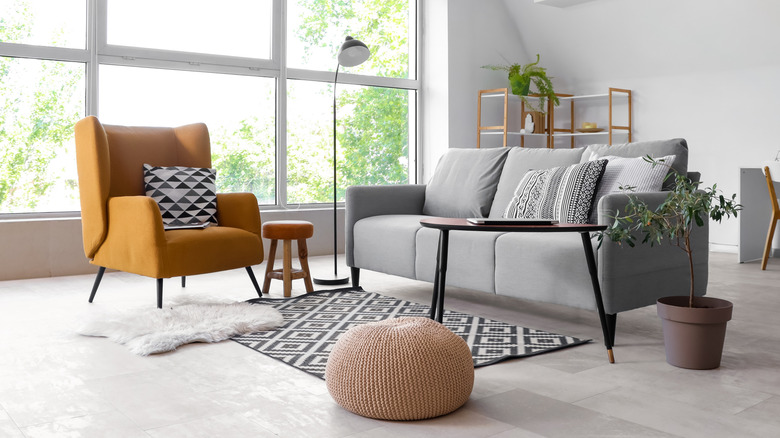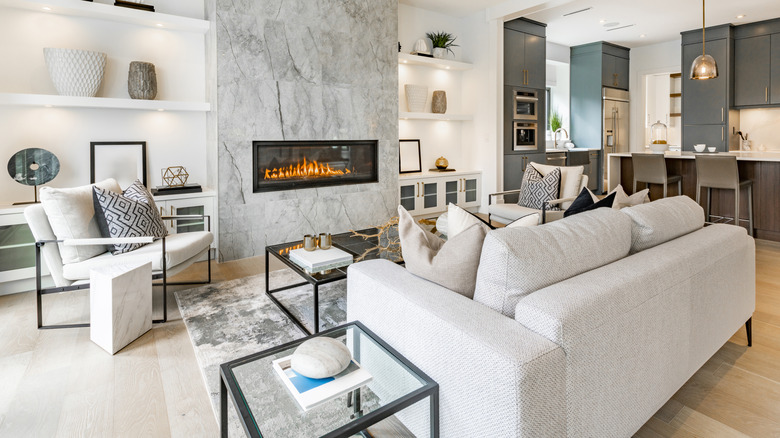Organize Your Living Room Decor Like This For An Instant Luxury Feel
The most luxurious living rooms rarely have their furniture pushed up against the walls. Instead, everything seems to "float." The sofa, the armchairs, and even the console table all sit a few inches, or sometimes a few feet, away from the perimeter of the room. It's called a floating furniture layout, and it's one of the simplest ways to make your home feel high-end, no matter the size.
The concept is simple: instead of treating your walls as the anchor, you design the room around a central focal point. That could be a coffee table, a rug, or even your fireplace. The result is a space that feels intentional and balanced. There's a subtle psychology behind it, too. When every piece of furniture is pushed against a wall, the space looks constrained, as if you're trying to make the room "fit." But when furniture floats, it implies that you have space to spare, even if you don't. The airiness between walls and furniture adds depth and creates a visual breathing room.
Floating furniture also helps define how a space is used. For example, it can break up an open floor plan without the need for walls or screens. To make it work, though, you need grounding elements. That's where area rugs and low lighting come in. A rug should be large enough that the front legs of the main furniture goes comfortably above it. You can then add a floor lamp or pendant light directly over the center to pull the eye toward the center of the room.
How to float your furniture like a designer
You don't need a mansion or a professional decorator to make a floating furniture setup work. A little planning goes a long way, and it all starts with the anchor. This is usually the sofa or sectional. You'll want to position it toward the center of the room, facing a focal point like a TV, fireplace, or panoramic window. Leave at least 18 inches of space behind the furniture. This way, you'll be leaving enough room for everyone to move around. You can then arrange armchairs and side tables in a loose semicircle or an L shape around your sofa to create a social zone.
Floating layouts are all about balance. This means pairing bulky furniture with lighter pieces to keep the room from feeling heavy. Think ottomans, glass coffee tables, slim metal legs, or open-back chairs that don't block sight lines. Also, make sure to avoid creating obstacles when setting up a floating layout. You'll want a clear footpath for easy navigation.
Next, you'll need some lighting. Choose the perfect floor lamp or overhead fixtures to define the central area. A pendant above the coffee table or an arched floor lamp near the sofa can lend a sense of structure and warmth. You can also add table lamps or sconces to layer the lighting and keep the corners from feeling forgotten. Don't ignore the back of your furniture, either, since it's visible now that you have a floating layout. A throw blanket, for example, can create visual interest from every angle. For a final touch, place a houseplant or two to add some greenery.

